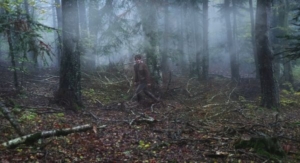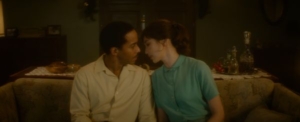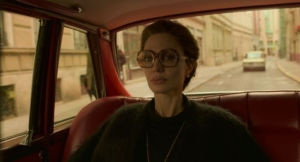Critics and writers have coined the terms “Hitchcockian” and “Tarantinoesque” to describe the influence of the directors’ work on other filmmakers. “Wong Kar Wai–an” would come in handy for Indonesian director Kamila Andini’s Before, Now & Then. The period film draws on the same palette as Wong’s signature film, In the Mood for Love: artfully composed two-person shots, pregnant silences, unspoken yearnings and secrets kept, all accompanied by pizzicato retro pop and local folk music. Family dynamics forged in Indonesia’s civil war give Before, Now & Then a different edge, but Wong’s influence over the film is very strong.
Before, Now & Then opens with a scene of a beautiful woman, Nana (Happy Salma), making her way through a forest—presumably on the run, but proceeding slowly as befits this languidly paced film. It’s the 1940s in the middle of Indonesia’s War of Independence, and Nana’s being pursued by a warlord who wants her hand in marriage. Fast forward 15 years to Nana tending her sage older husband, Darga (Arswendy Bening Swara), in a well-appointed bourgeois household full of beautiful objects. Slowly we begin to piece together the relationships between husband, wife, their children, and even some of the household items. The domestic scenario soon grows complicated with the appearance of Ino (Laura Basuki), another woman in Darga’s sights with whom Nana forms first a tentative and then a fast friendship, which adds an intriguing element to the story. Additionally, a figure emerges from Nana’s past and compromises her marriage. Questions of how the household arrangement can endure and how the characters will resolve their feelings and obligations to each other take center stage. Supposedly healed, Indonesian political divisions rumble at the periphery, bringing back unwanted memories. There’s much to admire in this winner of a Berlin Silver Bear (for Basuki’s performance), gorgeously composed and understatedly heartfelt as it is. The acting is appropriately stoic for the slow-burn narrative, and the leads keep the camera hooked. Swooning strings add sweep and emotion. But the film’s placid surfaces and the dutiful withholding of emotions may keep it a little out of reach for some viewers. Wong’s In the Mood for Love focused deeply on its two thwarted protagonists. Does widening the net to include lovers, children, and civil strife dilute or add to the power of Before, Now & Then? Some will be beguiled by the movie, others becalmed. Either way, it’s a subtle piece with loads of atmosphere in which to get lost.

















Leave A Comment